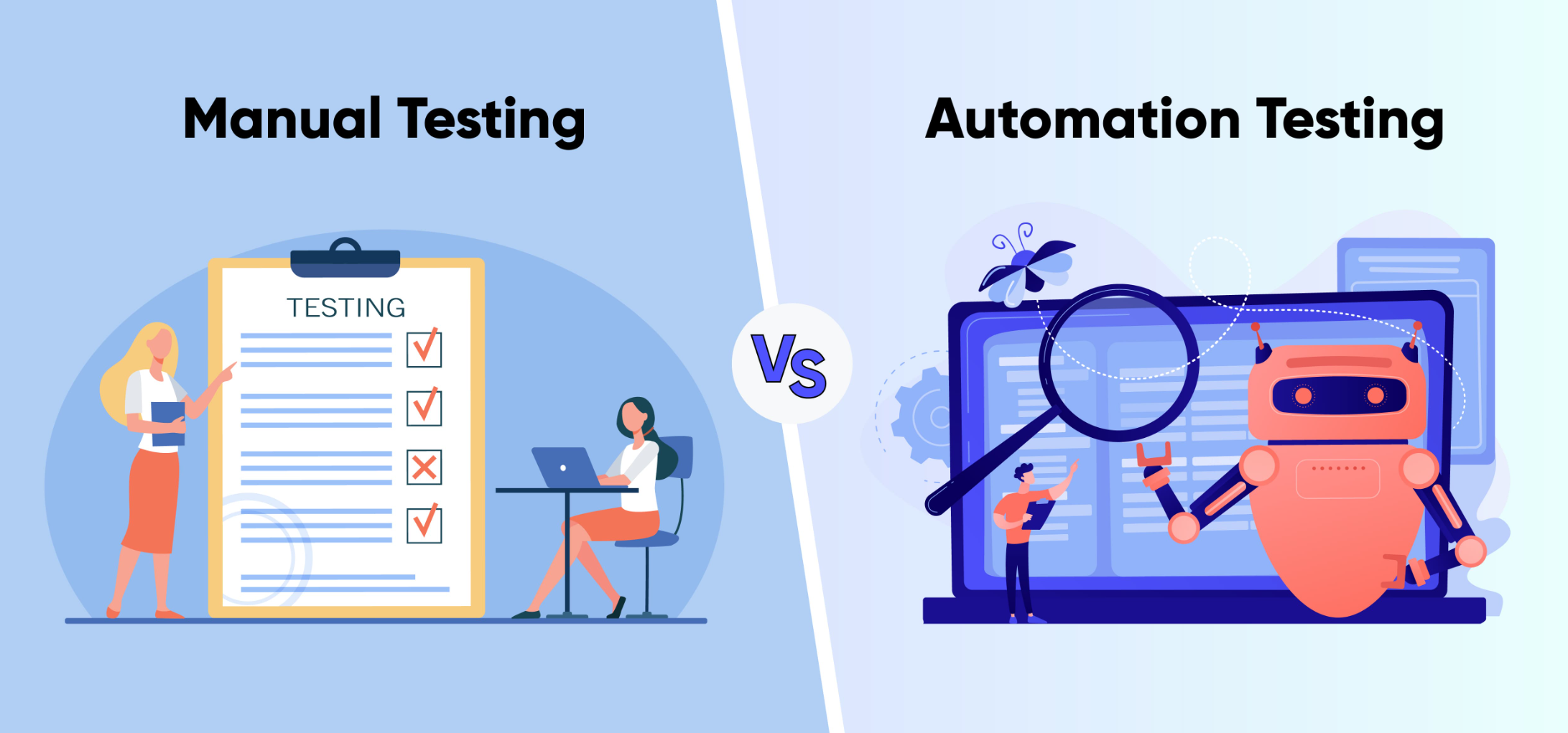Functional Testing: An in-depth overview
 Swapnoneel Saha
Swapnoneel SahaTable of contents
- What is functional testing?
- Why is Functional Testing Important?
- What are the key steps in Functional Testing?
- What are the different types of Functional Testing?
- What is the difference between Manual and Automated Functional Testing?
- What are the popular tools for Functional Testing?
- What are the Challenges in Functional Testing?
- Conclusion
- Functional Testing FAQ

To define it simply, we can say- Functional testing ensures every part of an application does exactly what it’s supposed to do. It’s about verifying that the software’s functions and features behave as expected from an end-user’s perspective. And unlike other types of testing, such as performance or load testing, functional testing focuses on the functionality itself rather than factors like speed or stability under load.
What is functional testing?
In simple terms, functional testing checks if the application’s functions align with the intended requirements and it validates specific actions or pieces of functionality, such as logging in, uploading files, or processing payments, by comparing the application’s actual behavior against the expected outcomes.
As an example, let’s say you’re testing a login feature. Then, the functional testing would ensure:
The user can enter a username and password.
If the correct credentials are entered, the user is granted access.
If the wrong credentials are entered, the user sees an error message.
If these scenarios play out as expected, the login functionality passes the test. It is as simple as that!
Why is Functional Testing Important?
Functional testing is crucial primarily for two main reasons:
User Satisfaction: The primary goal of any software is to meet the needs of its users. Functional testing makes sure that the product behaves as the users expect, leading to a smoother, more satisfying user experience.
Reliability: By ensuring each function performs correctly, you build a foundation of trust in the software’s stability and reliability, which minimizes the risk of unexpected issues cropping up in production, which could lead to user frustration or even lead to loss in the business.
Enables Early Bug Detection: Functional tests are typically run early in the development cycle and in that way bugs are detected early on; hence reducing the cost and time required for bug fixes. Catching issues in the initial stages is generally less expensive than fixing them in production, where they could impact more users and require urgent patches.
Prepares for Automation and Scalability: Functional testing also lays the groundwork for automated testing. Test cases and scenarios created in functional testing can be automated for regression testing, enabling faster and more scalable testing cycles. And tools like Keploy can streamline this process, generating automated test cases based on real user data, which enhances test coverage and aligns with production environments.
Enables Confidence in Changes and Releases: Functional testing provides a safety net when deploying updates or introducing new features. If functional tests pass, development teams can be more confident that changes won’t introduce unexpected issues, allowing for smoother, faster releases with minimal risk.
What are the key steps in Functional Testing?
Functional testing follows a simple but structured process to verify the accuracy of each function:
Understanding the requirements: This step is mainly about knowing what the application is supposed to do. This usually involves reading requirement documents, user stories, or acceptance criteria to understand the expected behavior of each feature.
Preparing Test Cases: Write test cases covering every functionality in the application. And each test case should have:
Test ID or name
The feature it tests
Pre-conditions (if any)
Test steps
Expected result
Setting Up the Testing Environment: Functional testing needs an environment that closely resembles the actual production environment. So, we need to set-up the testing environment. This includes data, hardware, software configurations, and network settings.
Executing Test Cases: Now, you can run each test case manually or automate it, depending on the context and, check if the actual outcome matches the expected outcome.
Log Defects: If a test case fails, log a defect with all necessary details to help the developers identify and fix that specific problem.
Retest and Regression Testing: After developers resolve the issues, you have to rerun the failed test cases and perform regression testing to ensure other functionalities haven’t been impacted by the change.
What are the different types of Functional Testing?
There are several approaches to functional testing, each suited to different stages of the development lifecycle. These includes:
Unit Testing: This involves testing individual components or functions of the application to ensure they perform correctly. Generally, Developers handle this during the early stages of development.
Integration Testing: After testing individual units, integration testing is being done, which ensures that the components work together as expected.
System Testing: This verifies the entire system to ensure it meets the functional requirements.
User Acceptance Testing (UAT): UAT is the final stage, where actual users or the clients test the system to make sure it meets their expectations before deployment.
Smoke Testing: Often called “sanity testing,” smoke testing is a quick check to see if the major functions of the application are working, like a basic health check-up for the software.
What is the difference between Manual and Automated Functional Testing?
Manual Testing: Generally for complex scenarios where human judgment is needed, manual testing is often the preferred approach. However, it can be time-consuming and is prone to human error.
Automated Testing: Automated testing is ideal for repetitive or large-scale functional tests. Tools like Selenium, Keploy, Appium, and Cucumber allow testers to automate tasks and quickly validate multiple test cases.

Automating functional tests can save time and resources, but it requires initial investment in setting up scripts and maintaining them as the application changes. Typically, a combination of both manual and automated testing gives the best results in real-world scenarios. But nowadays, due to the huge advancement in automated tools like Keploy, we generally prefer automating most of the testing scenarios.
What are the popular tools for Functional Testing?
Several tools can help streamline and enhance the functional testing process, each suited for different types of applications and testing needs. Here’s a small breakdown of some popular tools:
Selenium: One of the most popular tools for web application testing, Selenium allows for automated browser interactions and is widely used for end-to-end functional testing of web applications.
Keploy: Keploy is an open-source tool designed to simplify functional and regression testing by automatically generating test cases from real application interactions. It can capture actual requests and responses in production and convert them into test cases, reducing the manual work needed to create and maintain test suites.
Appium: This is a widely used tool for testing mobile applications on both Android and iOS. Appium enables testers to write tests using a variety of programming languages and is compatible with native, hybrid, and mobile web applications.
Cucumber: Cucumber allows tests to be written in plain language (like Gherkin), which makes it easier for non-technical stakeholders to understand and participate in the testing process. It is ideal for behavior-driven development (BDD) and is often used to validate business requirements and is popular for functional testing in agile environments.
What are the Challenges in Functional Testing?
Functional testing comes with its own set of challenges:
Complex Test Scenarios: With complex applications, covering every possible scenario can be challenging and time-consuming.
Frequent Changes: Constant updates can make maintaining test cases tricky and hard for managing.
Data Dependency: Functional tests often depend on specific data. And scenarios where there is inconsistency in the data, or the data is missing,- the tests might fail.
Conclusion
Functional testing is an invaluable process in software development and it ensures that each part of your application works as expected, ultimately leading to a more reliable, user-friendly product. By understanding requirements, designing thorough test cases, and leveraging the right tools, functional testing enables teams to catch issues early, maintain quality, and deliver software that satisfies users and stakeholders alike.

And with that being said, it’s wrap to this blog. Thank you for reading it! I hope you found it informative and valuable. For more information, follow me on Twitter (swapnoneel123) where I share more such content through my tweets and threads. And, please consider sharing it with others on Twitter and tag me in your post so I can see it too. You can also check my GitHub (Swpn0neel) to see my projects.
I wish you a great day ahead and till then keep learning and keep exploring!!
Functional Testing FAQ
How does functional testing differ from non-functional testing?
Functional testing checks if the features work as expected, focusing on what the system does. Non-functional testing, on the other hand, evaluates aspects like performance, usability, and reliability, focusing on how well the system performs. Functional testing would ensure a login works, while non-functional testing might measure how fast the login loads or if it maintains security standards.
What is black-box testing, and how does it relate to functional testing?
Black-box testing is a technique where the tester examines the functionality of the software without needing to understand the internal code or architecture. Functional testing is often conducted as black-box testing since it focuses on inputs and expected outputs rather than the underlying code.
Why do we need both manual and automated functional testing?
Manual testing is essential for scenarios where human judgment is necessary, like assessing the usability of a user interface. Automated testing, however, is faster and ideal for repetitive tasks or larger applications. Together, they ensure thorough and efficient testing coverage.
How does Keploy enhance functional testing?
Keploy is an open-source platform that simplifies automated testing by enabling teams to create test cases from real application interactions and logs. This approach allows developers to generate meaningful tests based on actual user behavior, making it easier to catch edge cases and validate core functionalities. Keploy also supports automated test case generation, reducing the manual work involved in traditional functional testing while ensuring tests remain relevant and effective over time.
Subscribe to my newsletter
Read articles from Swapnoneel Saha directly inside your inbox. Subscribe to the newsletter, and don't miss out.
Written by

Swapnoneel Saha
Swapnoneel Saha
Hello, I'm Swapnoneel Saha and I am currently in my sophomore year. I am a Front-End Developer, Programmer and an open-source enthusiast. I am passionate about exploring new technologies and contributing to open-source projects. In my free time, I enjoy learning about new programming languages and staying up-to-date with the latest developments in the tech industry. Follow my blog to stay informed about my latest articles and projects.
